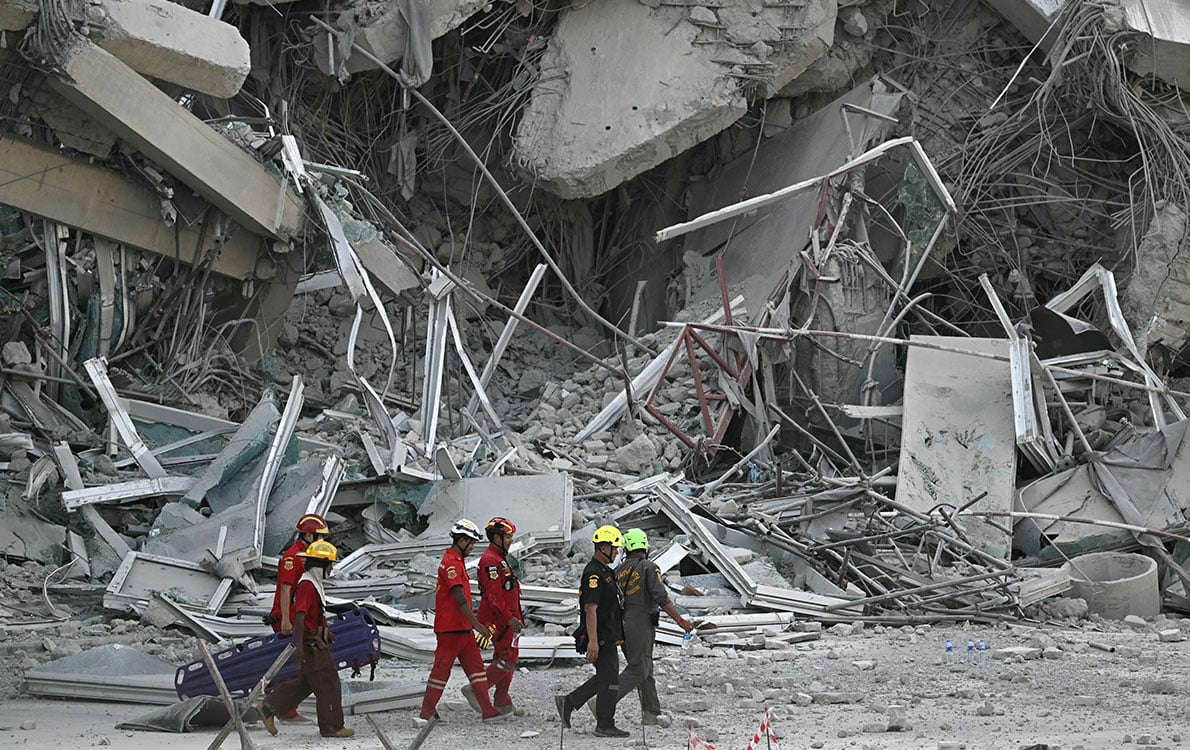With a gift today, you can help equip people with essential emergency aid items. Enabling them to survive. Helping them to rebuild. Thanks to the kindness of our supporters, we can assist people in places like Myanmar, Sudan, Chad, Yemen, Burkina Faso, and many more. Thank you for caring.
These are examples of what your money could provide. Whatever you’re able to give, you’ll help to provide urgent shelter and essential items, wherever the need is greatest.
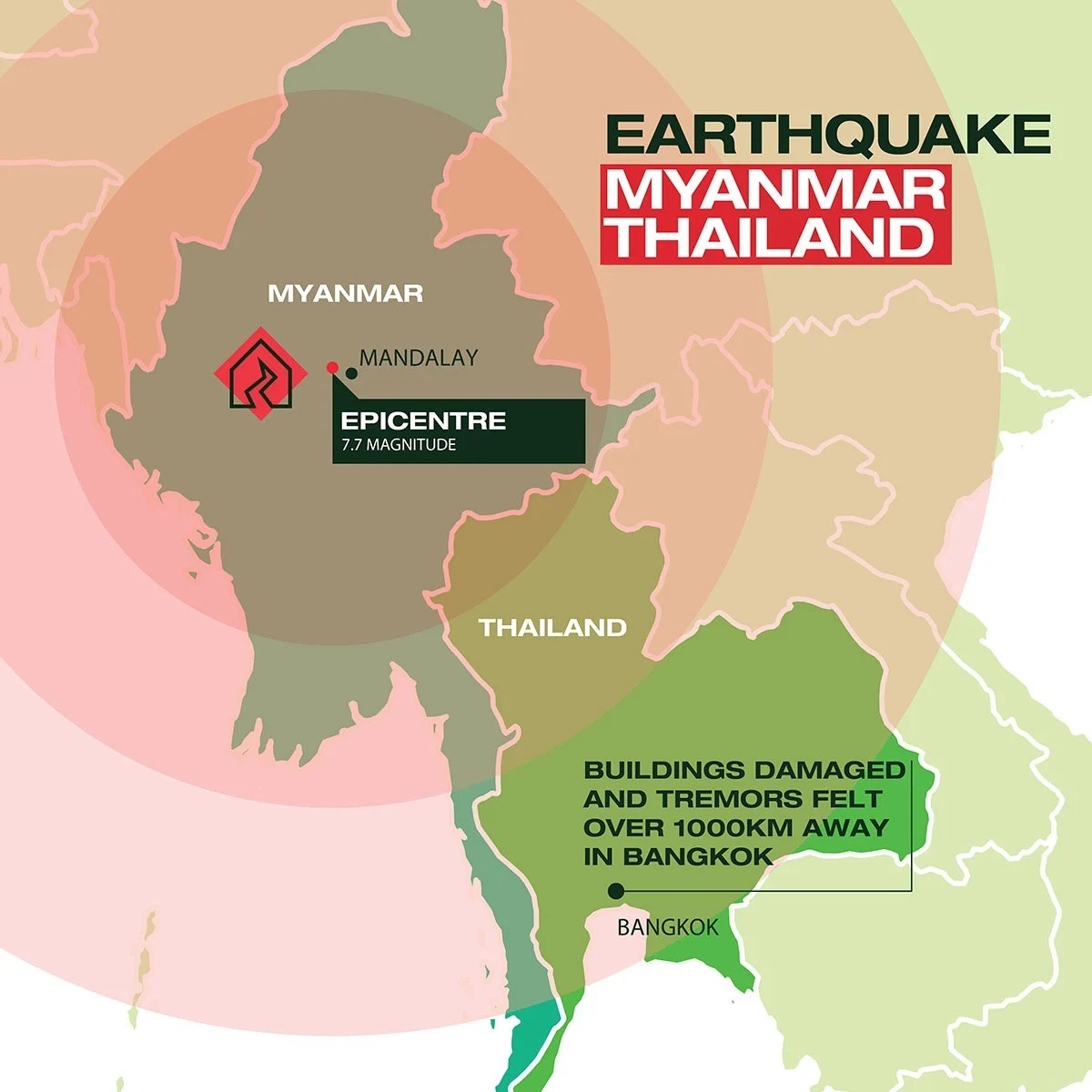
What is happening in Myanmar?
Myanmar has been struck by a devastating 7.7 magnitude earthquake, causing widespread destruction. This is a huge humanitarian crisis.
The earthquake was followed by a significant aftershock of 6.4M approximately 12 minutes later. Tremors were felt as far as Thailand and China when the epicentre of the earthquake hit central Myanmar. Another significant earthquake of 5.5M struck central Myanmar just two weeks after the 7.7 quake.
One million people have been forced from their homes. Hospitals within Myanmar are overwhelmed, and extreme temperatures of over 40 degrees Celsius are increasing the risks for communities and responders. With water supplies scarce, the threat of disease is growing.
Across Myanmar, people are missing or feared dead, their homes turned to rubble. For thousands, the only option is to live in damaged homes, flee, or sleep. The current conflict makes displacement within Myanmar even more dangerous. Heavy rains are further complicating relief efforts.
People need urgent humanitarian assistance. Aid has started to arrive, but it’s not enough. Vulnerable people urgently need clean water, food, medicine, and emergency shelter.
Donate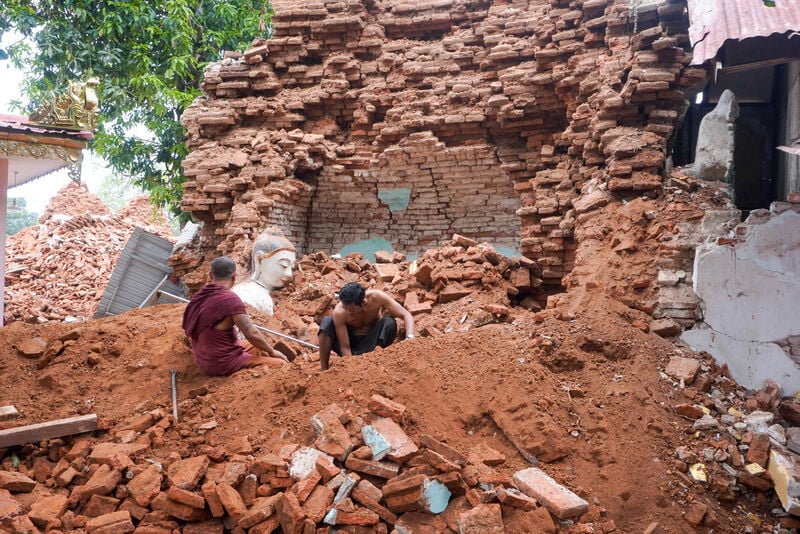
How is ShelterBox responding?
ShelterBox has launched a comprehensive response to support communities affected by the devastating earthquake in Myanmar. In partnership with CPI, we’re reaching 1,000 highly vulnerable households across Mandalay and Southern Shan State – focusing on people who have received little or no support, including those living in the open or in overcrowded displacement sites.
Shelter repairs and our pilot project
Our response is tailored to the specific needs of each household. Repairs are designed to withstand the rainy season and provide shade from intense heat. Aid will vary by location:
- Dry areas: Robust timber shelters
- Wet areas: Bamboo frames with corrugated iron roofs and fixings
Local carpenters and masons are at the heart of this effort. Our pilot project is now underway, supporting hundreds of people whose homes were damaged. Bespoke repairs are being made using quality materials sourced from local markets. Each home takes up to three days to repair, with the first 50 homes expected to be completed by mid-July.
Following this, we’ll review the pilot based on community feedback before launching the main project at the end of the month, which will run for five months and support thousands more.
Essential aid beyond shelter
To address urgent needs beyond shelter, we’re also providing:
- Water filters, buckets, and hygiene kits to combat disease
- Solar lights and flashlights for safety, comfort, and phone charging
- Kitchen sets so families can prepare and share meals
Local sourcing and distribution
Distributions began in July, ahead of the peak rainy season. Given the logistical challenges and high costs of importing aid, we’re sourcing items locally – supporting both communities and markets.
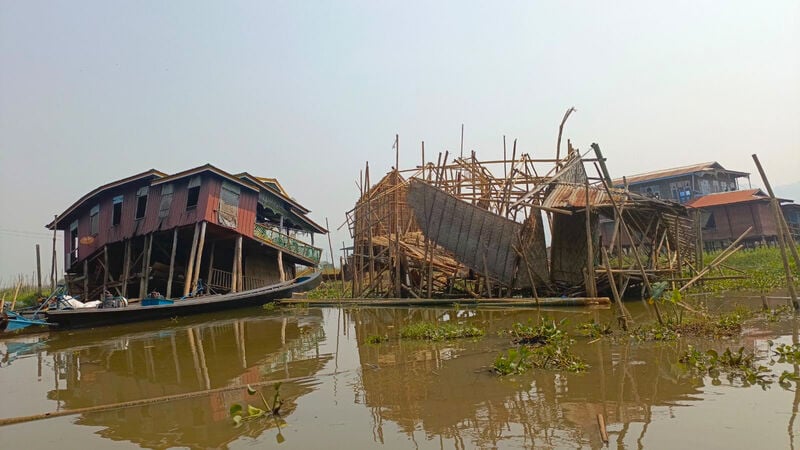
What are the challenges to responding in Myanmar?
It’s an incredibly challenging environment, and the humanitarian response will take time. While we want to get aid to people as quickly as possible, it’s important we do this in the right way, so we do no harm to people left vulnerable by conflict and the earthquake.
Myanmar is at war – this adds layers of complexity to an already challenging response. Organisations working in Myanmar need relevant permissions, and travel to affected areas is extremely limited. Importing aid into Myanmar and then moving it to where it is needed is extremely complicated. So, we’re looking at all options, including what we can procure locally.
The political and security environment is complex, but we’re working hard to get emergency assistance to those who need it most.
Your support is crucial in making this response possible.
Donate todayWhat difficulties do people face following the earthquake?
In Myanmar, the devastating earthquake has intensified an already dire humanitarian crisis. Hospitals are overwhelmed, struggling to treat the injured. Communication networks are failing, and blocked roads make aid delivery and rescue efforts nearly impossible.
Large numbers of people are forced to sleep outside, afraid of aftershocks and unable to return to their homes. Food supplies are low, with 15.2 million people at risk of food insecurity prior to the quake. Without clean drinking water, the risk of disease is extreme. Medical support is stretched thin, and the lack of shelter means families are exposed to harsh conditions with no protection.
The ongoing conflict is making rescue efforts even harder. People are desperately searching for missing loved ones, but with restricted access, many remain trapped or missing. The recovery of bodies is becoming increasingly difficult as communities struggle to find and bury their dead amidst the destruction.
This latest disaster has pushed the people of Myanmar to the brink. Already surviving through conflict and displacement, their resilience is a testament to their strength – but as conditions deteriorate, survival becomes even harder.
ShelterBox is ready to respond, to provide emergency shelter like tents and tarpaulins, as well as water filters, mosquito nets, and solar lights. We need your support to reach those who need help the most.
Please, if you can, donate today.
Donate nowYour questions about the Myanmar earthquake answered
Myanmar, also referred to as Burma, is in northwest Southeast Asia.
It is bordered by India, Bangladesh, China, Laos, and Thailand.
The countries affected by the earthquake include Myanmar, Thailand, China, Bangladesh, India, and Laos.
Earthquakes create massive logistical challenges, and Myanmar’s ongoing conflict makes this disaster even harder to respond to. A temporary ceasefire has been announced to allow help to reach the people who need it.
The ceasefire in earthquake-affected areas is due to last until Tuesday, 22 April, yet it’s not clear what will happen then or whether it will be extended. Fighting has been reported in some parts, and in other areas, the war is still ongoing. This makes the situation extremely challenging. More needs to be done to allow aid agencies the access we need.
On top of this, communication networks are down, making it harder to assess the full scale of destruction and coordinate a response. There is also severe damage to infrastructure like power, water, phone networks, internet, airports, roads, and bridges.
The shallower the earthquake, the more destructive an earthquake is likely to be. ‘Shallow’ earthquakes tend to be between 0 and 45 miles deep. This was a depth of just 10km.
Aftershocks are smaller earthquakes that happen after the largest shock of an earthquake sequence.
They are continuing and can make people fearful of returning home. They can continue over a period of weeks, months, or years, and the risk of further destruction remains high.
Before the earthquake, Myanmar was already facing one of the most severe humanitarian crises in the world.
The country has the fifth-highest number of people in need globally, with over 20 million people struggling to survive. Millions are struggling to survive as active fighting continues, making daily life dangerous and uncertain.
Ongoing conflict had already displaced 3.5 million people, forcing families into temporary shelters and contributing to the economic crisis.
Now, with more homes destroyed, people are living in unstable buildings or outside in the open, and the crisis is dramatically worsening.
Thousands will remain displaced, with nowhere to go, without urgent humanitarian assistance.
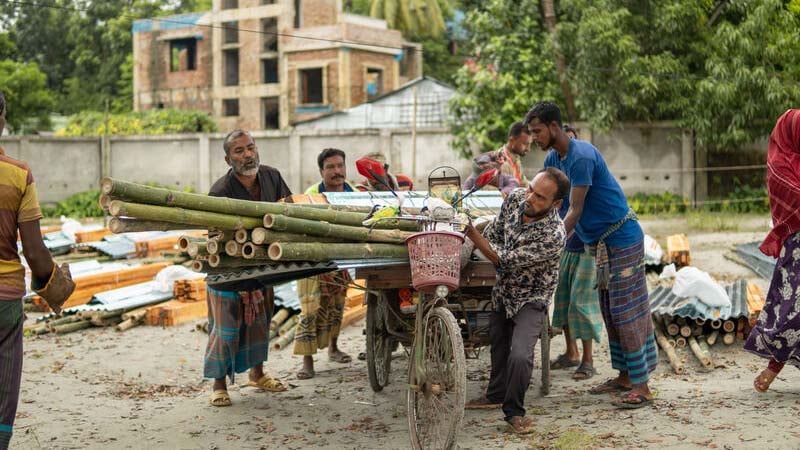
Why support ShelterBox?
With over 25 years of experience, we are experts in emergency shelter after disaster.
From the 2023 earthquakes in Türkiye and Syria to responding to the magnitude nine Tohoku earthquake and tsunami in Japan in 2011, we have provided shelter to over 2.5 million people so far.
In these uncertain times, your support is more valuable than ever.
We won’t stop until we see a world where no family goes without shelter after disaster. Will you help us?

